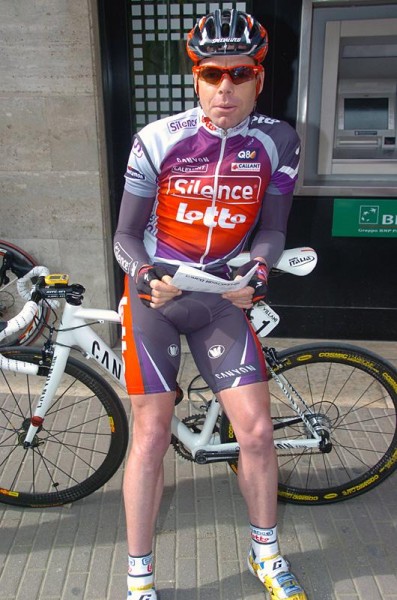How to burn fat better
Professional riders have finely tuned fat-burning engines, and as Joe Beer illustrates, there are...

April 1, 2009
Professional riders have finely tuned fat-burning engines, and as Joe Beer illustrates, there are several simple steps to follow that can boost your own capacity to burn fat. They focus on what you eat before and after training, according to the intensity of the ride.
For fitness riders, the question "Why would I want to be able to burn fat?" begs the obvious answer - to get in better shape and look it. But for fit athletes who already have a well-worked lipolysis system, the answer might not be so obvious.
But tapping the body's fat in training increases endurance, reduces the likelihood of 'bonking' and increases fitness. So how exactly do you improve it?
Fat burning tips
1. Keep the ride intensity under 80 percent of your maximum heart rate (HRmax) and ride for long periods.
2. Training regularly, even turbo training sessions, helps use fat as fuel more than any special food, supplement or psychological trick and during a two-hour endurance ride does not save glycogen but it does significantly decrease the use of fats stored within the muscle fibres.
Dual fuels
The latest race content, interviews, features, reviews and expert buying guides, direct to your inbox!
Starting with the basics, you have two choices of fuel: carbohydrate and fat. Carbohydrates provide around 1,500 to 2,000 calories when muscles are fully 'carbo loaded'. This 'higher-octane' fuel can help you 'go long' by combining with fat use, or it can fuel quick efforts or sustained high-intensity riding on its own.
The fat stored under your skin and within muscles themselves is a very high calorie fuel depot. Even lean riders have over 30,000 calories stored as fat, and there are quite a few fit riders carrying well over 100,000. This is clearly a significantly larger potential fuel source than carbohydrates.
Fat use generally increases steadily as a ride draws out, starting with the use of fat droplets stored in the muscle and then gradually using fat circulating in the blood stream that is coming off the 'chub' stores spread around the body.
Tapping the generous body fat stores saves limited glycogen, but remember even at steady riding levels you will still use carbohydrates.
Build the engine
Training is crucial for optimising your dual fuel-burning engine. If you can increase your oxygen carrying capacity and the architecture of fat use by riding regularly, you will be many times more efficient than the irregular rider.
Studies show that one effect of training regularly is that less lactate is produced at a given level of effort. For example, unfit people (those whose ability to take up oxygen, expressed as VO2max, is about 25-35ml/kg/min) may have a significant increase in lactate (LT or Lactate Threshold) at 50 percent of their VO2max.
Trained athletes (with a VO2max of 60-70ml/kg/min) are likely to have this same lactate increase at around 70 to 80 percent of VO2max.
More importantly, data suggests that fat usage may be 80 percent higher in athletes compared to obese individuals.
Data from well-trained riders in the study (VO2max of 64ml/kg/min) suggests that fat use stops above 87 percent of VO2max, and the peak area is around 45 to 65 percent VO2max. This equates to around 70 to 85 percent of maximum heart rate.
Type One 'endurance' muscle fibres were found to be the main area of fatty droplet use.
Interestingly, glycogen storage after fasted sessions, on water alone, was much greater than the feeding during the ride. This suggests these fasted water-only rides up to two hours could be used to boost peak levels of fat use by 50 percent and post-exercise muscle glycogen storage by 200 percent.
However, for all those pulled in by 'fat burning' spinning sessions, aerobics classes and 'step', be sure you are number savvy. Fat use probably only provides 0.5g to 1g per minute.
This will be greater during later stages of training sessions and in very fit riders (maybe 600 to 800 calories per hour). But a carbohydrate meal 30 to 90 minutes before your ride will greatly turn down your fat burning engine, switching you to burn more carbohydrates.
Have breakfast after the ride then, and if you're going for over two hours eat breakfast on the bike in the form of regular carbohydrate foods - about 40 to 60g per hour.
Take a rider with bad meal timing; lack of consistent riding, who's training too hard and fat use will be very poor. However, if you leave two hours between eating and riding, train fasted up to two hours once a week, keep in your steady riding zone (60 to 80 percent of maximum heart rate) most of the time and stay consistent, then you will be a good fat burner.
More fitness features
